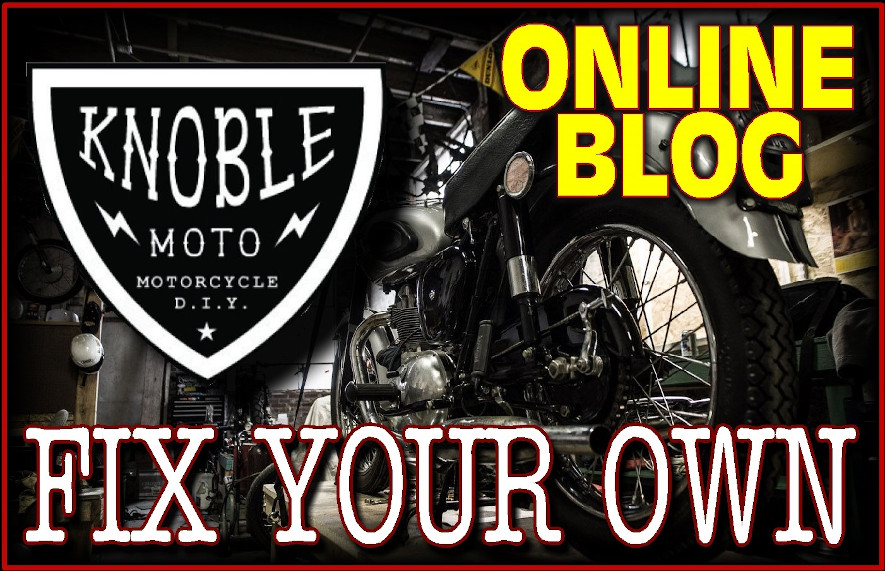
Knoble Moto: Tearing into the 72 XS650!
Last month, I started a series of articles on the progress of our 72 Yamaha XS650. This month, we performed the initial “return-to-life” service and brought the carbs back from the dead.
In a recent Maintenance 101 class, we performed an oil change on the bike, drained the oil, and found metal shavings. These shaving were larger than what one would normally find during a regular oil change, so there is some notable wear inside the engine and transmission. However, these old XS650 engines are pretty tough so I decided to keep moving forward with the project without splitting the engine case.
Moving forward, we changed the oil and filters and then filled the engine with conventional oil. I selected conventional oil because I’m guessing there was some corrosion inside the engine, as well as obvious wear due to the metal shavings. As a result, when the engine is restarted – it may go through a “break-in process” in a way. It’s important to remember that an engine will not “break-in” with synthetic oil because frankly, synthetic oil works that well.
Later into the 101 class, we installed new spark plugs too. When working on an old bike, this should be done on a regular basis. Just a few overly rich cycles of engine, and your plugs can get fouled with carbon. Once this occurs, the plug will inconsistently fire and this will make tuning difficult or impossible. *Plugs were gapped to manufactures specifications.
After the class, I removed the carburetors and disassembled them. All the screws came out without requiring a sacrifice to the motorcycle gods. The carbs had obviously been sitting for an extremely long time and were clogged. I soaked the carbs in a sonic cleaner for ten hours, but the fuel intake tube was still clogged solid. The residue from the old fuel (and who knows what else) was packed in there so hard, I had to use a drill and a drill bit to open up the fuel intake tube. To clean the other passages, I used a torch tip cleaner. These are designed for oxy-acetylene torch tips, and they have a light file surface on the sides of each cleaner, so it is important to be cautious that you do not take any metal off when cleaning the ports and jets of a carburetor. You wouldn’t want to accidentally re-jet your bike by taking a little brass off somewhere.
Afterwards I soaked the carb bodies in the sonic cleaner for another hour. Then I broke out the dental picks to scrape the passages clean again. (It’s nice to be on that end of the dental scraper for once). I also soaked the jets in the sonic cleaner this entire time. Once I cleaned all the jets and the carb passages, I reassembled with new gaskets from Cometic Gasket.
It is worth noting that when the carbs are manufactured, they are cross-drilled from a few different angles to form the ports and passages, and extra holes are then plugged. This creates a problem where you have dead end passages inside your carb, and gunk gets stuck in there despite your best cleaning efforts. Often I will reassemble my carbs, and the jets or ports will immediately reclog, then I have to disassemble and clean once again. So don’t get discouraged if you have to clean your carbs multiple times. Patience and attention to detail is important here.
At one of the carb classes, I reassembled and tuned the carbs as a demonstration for the class. On the second night, I installed the carbs on the bike. After quite a few kicks, some swearing, and a few puffs of smoke, the XS, once again, breathed to life. At the class I did a little more tuning and syncing, and it ran pretty okay. After the class, I disassembled the carbs to clean them again, and predictably, more gunk was located in the idle jet circuit. The idle circuit is almost always the most challenging circuit to get clean. This is due to that particular system having the smallest passages and orifices. I reassembled, kicked a few more times, and once again combustion happened, and the bike wheezed back to existence. I subsequently did a burnout, because I am mature like that. *The video is on my YouTube page. Then, despite the terrible suspension, dry rotted tires, and highly questionable brakes – I took it for a ride around the industrial neighborhood. *I am not recommending you try this.
No matter how many times I get an old bike on the road, the feeling of success during that first ride never gets old. I returned to Skidmark Garage where low cost beers were had in celebration.
In the upcoming Suspension Workshop, we will be rebuilding the front forks and replacing the fork seals on the XS650. Later this year, I will be holding another workshop to replace the chain and sprockets. If you are interested in getting involved, please don’t hesitate to sign up for a workshop.
Check back next month for fine-tuning of the engine, more joy rides of questionable safety, and the discovery of case flex on the engine.Knoble Moto is a partner of Skidmark Garage. We teach classes for the DIY crowd, on all aspects of motorcycle repair. Entry level maintenance, valve adjustments, carburetor cleaning and tuning, drive line service, suspensions, and even engine work. Our class subjects are updated regularly, so check back often. If there is a subject you do not see covered, shoot me an email at knoblemoto@gmail.com Find us on Facebook at www.facebook.com/knoblemoto, Instagram Knoble_Moto and www.KnobleMoto.com



